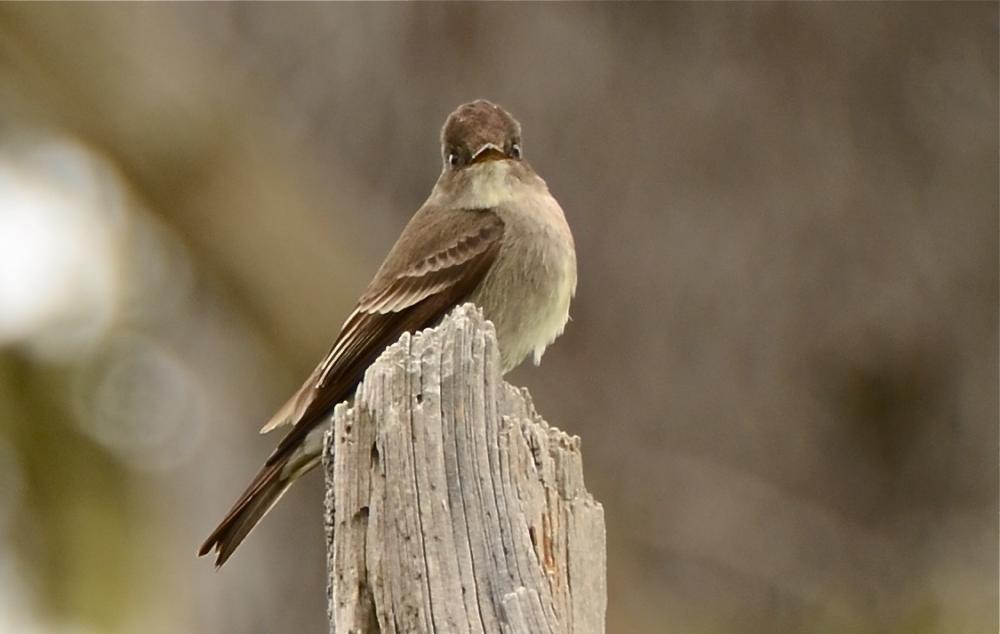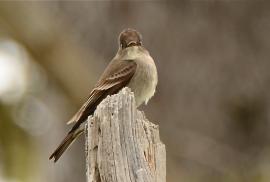Guide to Boreal Birds
Overview
This species is generally found in more open, park-like woodlands than the Eastern Wood-Pewee and is thus more readily observed. In a few areas along the western edge of the Great Plains the two pewees occur together without interbreeding-conclusive evidence that despite their great similarity, they are distinct species.
Description
6 1/2" (17 cm). A sparrow-sized flycatcher, dull olive-gray above, slightly paler below, with 2 whitish wing bars. Eastern Wood-Pewee (Contopus virens) of eastern United States extremely similar, but generally less dark below; the two species are best distinguished by voice. Empidonax flycatchers are smaller and usually have noticeable eye ring.
Voice
A harsh nasal pee-eeer, very different from the sweet peee-ah weee of the Eastern Wood-Pewee.
Nesting
3 or 4 white eggs, spotted with brown, in a shallow saucer of grass fastened to a horizontal branch.
Habitat
Open woodland and woodland edges; orchards.
Range/Migration
During the winter, this species prefers the mature tropical forests of the northern Andes and does not show any tendency to shift to disturbed sites or secondary growth. This preference makes it particularly vulnerable to the destruction of mature rain forests, which is occurring at an alarming rate. Western Wood-Pewees migrate through the Mexican highlands and follow the Rockies and the mountainous regions of the Pacific coast to the great forests of Canada and Alaska. The migration of this species is significantly slowed during cold weather, as it depends on flying insects for food.
Breeds from eastern Alaska, Mackenzie, and Manitoba south through western United States. Winters in tropics.



